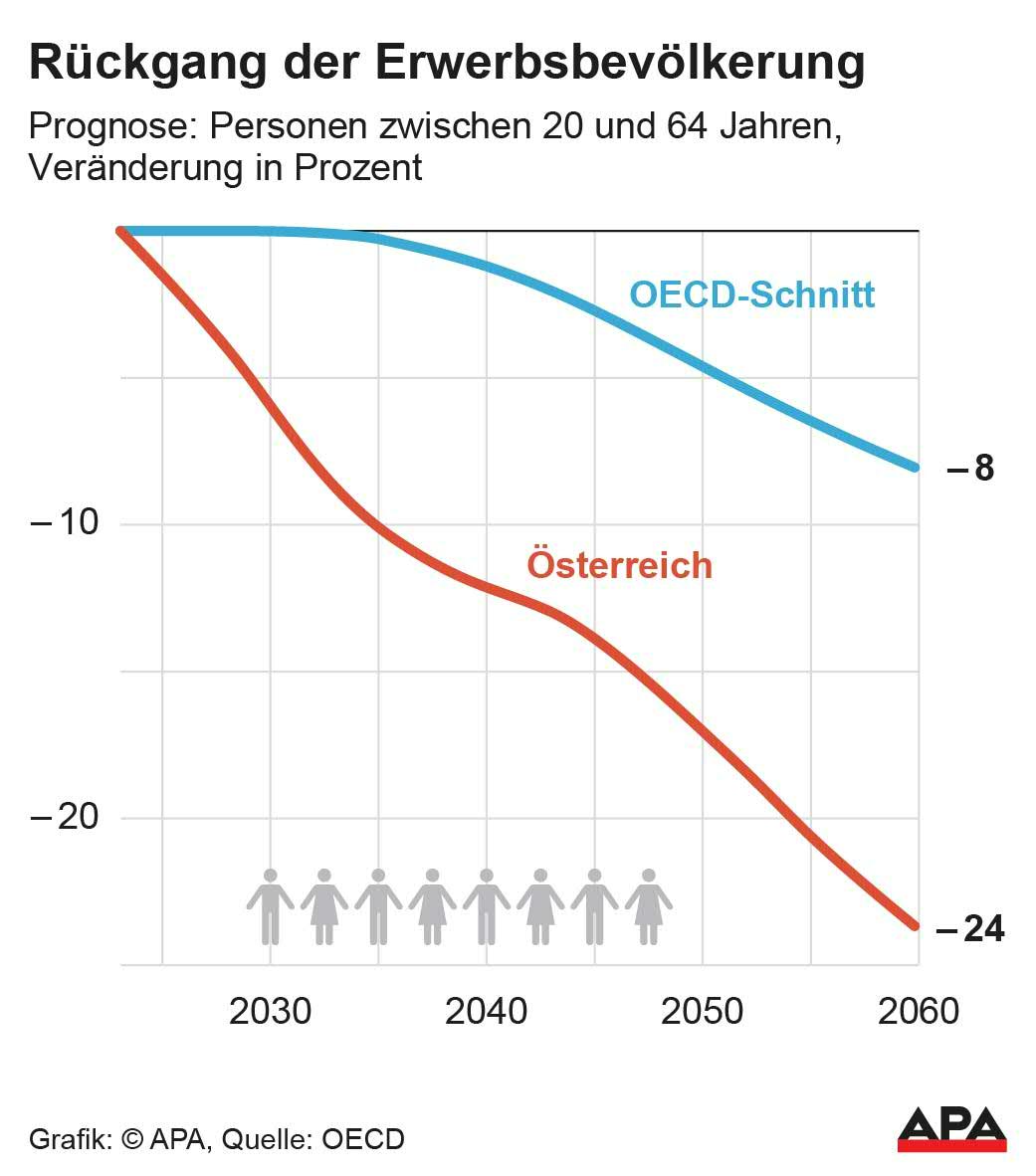Significant Decline in Working Population Forecasted

The projected decline across all 38 OECD member states averages only 8 percent. The aging population in the coming decades is expected to economically pressure industrialized countries, according to the Organization for Economic Cooperation and Development (OECD).
"Population aging is expected to lead to a significant labor shortage and pressure on public finances," said OECD Secretary-General Mathias Cormann on Wednesday. Austria is particularly affected by the shrinking working population.
Trends in Employment Rates
The current situation in the labor markets of the member states was described by the OECD as robust. Last year, employment rates in OECD countries continued to climb to an average of 72.1 percent - "the highest level since at least 2005," Cormann noted, citing the annual Employment Outlook report.

In most OECD countries, the employment rate can be stabilized by creating more jobs for older people and promoting women's participation in the workforce, the OECD explained. However, productivity must also be boosted to counteract the slower growth of per capita GDP.
Focus on Austria and Germany
Germany and Austria, in particular, can increase this growth by "mobilizing unused labor potential," the OECD stated. For example, older workers in good health could be employed, "regular migration" could be increased, and "gender differences in employment" could be reduced. With this and additional productivity growth, Germany and Austria could mitigate the braking effect that demographic change has on growth.
(APA/Red)
This article has been automatically translated, read the original article here.





